The what, you ask? Even most experienced paintball players have never heard of it. Basically considered the first "second generation" paintball marker, one of the first made specifically for the sport. (That is, not originally a cattle marker or a rebarreled pellet gun. The Splatmaster was the very first purpose-built marker, and the Puma supposedly the first of the 'next generation' as technology progressed.)

(Photo borrowed from VintageRex.)
I'm given to understand that the gun had some leakage or reliability issues, the true extent of which no one can say. But according to a very old rec.sport.paintball newsgroup post from '96, the problems- or possibly financial issues- led the developer to slink off into the night, leaving behind the guns, his field, and everything. Supposedly the gun cost twice what a Nel-Spot did at the time, and I'd wager that between that and reliability issues, sales weren't up to expectations.
AND... this was not a cheap gun to make. The pump grip and the grip panels were injection molded, the grip frame die-cast, and the body was a custom extrusion. As a rough guess, I'd bet the guy sank over $100K- in 1985 money!- into them, before the first one ever hit the fields. If he had bank loans to finance it, lower than expected sales could have easily crashed the company.
But, that's mostly guesswork and rumor. Hopefully we can get more real info, but for the time being, let's see if we can't bring one of these badboys back!
I bought or horsetraded for a pair of them from some fellow in Canada, back in 1999, just as I was getting this little biz of mine up and running. They'd been dismantled and were in a bag when I got them, and a quick survey showed a few parts needing repair or replacement. One of the biggest being the upper CO2 plugs- the knob with the red button, seen above.
That's where the 12-gram goes, like the old BE Nightmares, and the red knob is both a "piercing" and a 'degas' button. You drop a cartridge in, and then smack that knob- that drives the cart forward a bit and pierces it against a fixed and not-hollow pin. That pressurizes the entire chamber.
Smack it again, and that vents the upper tube, so the knob can be easily removed and the cartridge replaced.
Both of mine were missing them, and back then I didn't even have a picture of what they looked like. AND... at the time I got them, I may not have even had a good lathe, and even if I did, my skills weren't up to snuff. The knobs use a heavy, shallow ACME thread- it's only about two full turns to remove the plug. I had a local machinist make three blanks for me, just doing the threads, and I'd take care of the rest.
"The rest", however, had to wait for three things: One, I needed to find out what the plug looked like, and how that degassing knob worked. I didn't even know at the time the knobs had to actually seal the chamber. Two, I needed a better lathe, and maybe a little more practice before taking that on. And three, I needed the free time to do it.
Fast forward roughly twenty-four years.
I've been thinking of some of these old projects, with an eye towards making some nice little videos out of them. (And as an excuse to finally get some of them done. ) I remembered these, and one evening when the project du jour was not going well, I decided to go dig them out see what all needed to be done.
) I remembered these, and one evening when the project du jour was not going well, I decided to go dig them out see what all needed to be done.
It took me much longer than expected to find them, and as it turned out, they were in a wholly unexpected box.

They should not have been jumbled in there- I'm not sure how it happened, but at least I found them.
Or most of them, anyway. I was pretty sure I had very close to all the parts needed to put both of them back together, save for the CO2 plugs. But after sifting that box, I had two bodies, two pumps, two grip frames... one set of grip panels, one hammer, one spring, and some miscellenous screws.
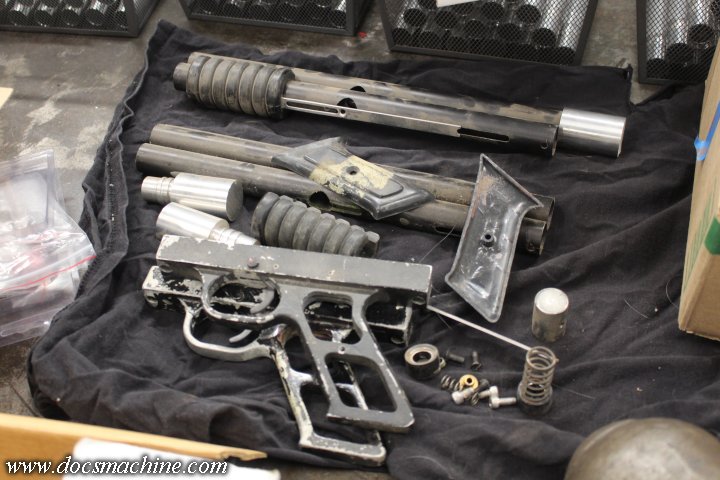
Turned out one of them still had the valve and bolt...
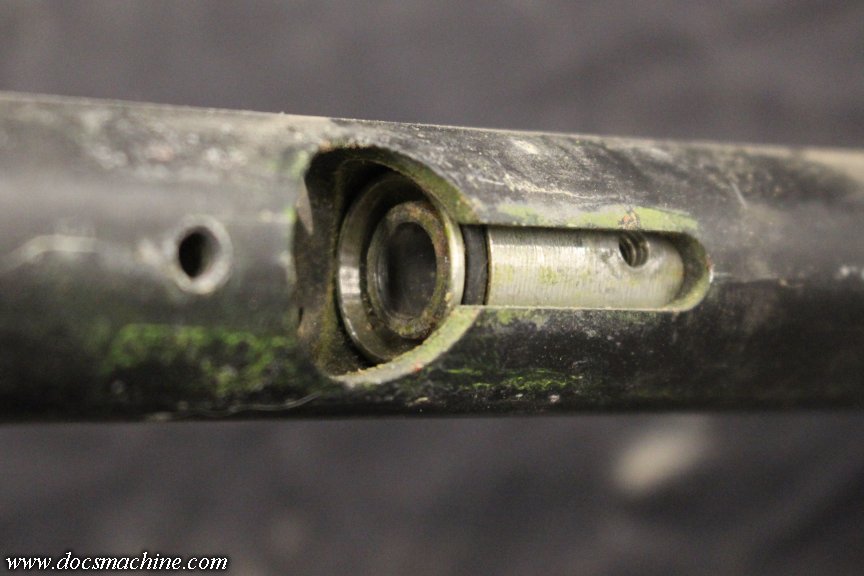
So with the one hammer and mainspring, and single set of grips, I had at least one complete gun. I'm still fairly certain that I had a bag with the extracted parts from the second, but an exhaustive search still hasn't turned those up.
And, of course, I'm not sure I've even looked at these in somewhere around fifteen years. Since they were in a box I didn't expect them in, chances are that bag wound up elsewhere. I don't know.
However, a Guild regular pointed out that there was actually one for sale up on eBay right then, and checking that out, it seemed not only complete, but actually had the CO2 plug as well. It was missing the 'degas' part, but I could at least have the body of the knob to measure to fit new ones.
While waiting for it to come in, I set about looking mine over to finally take the first close look at these things, in more than a decade. Just mocking one up real quick, here's what it looked like.
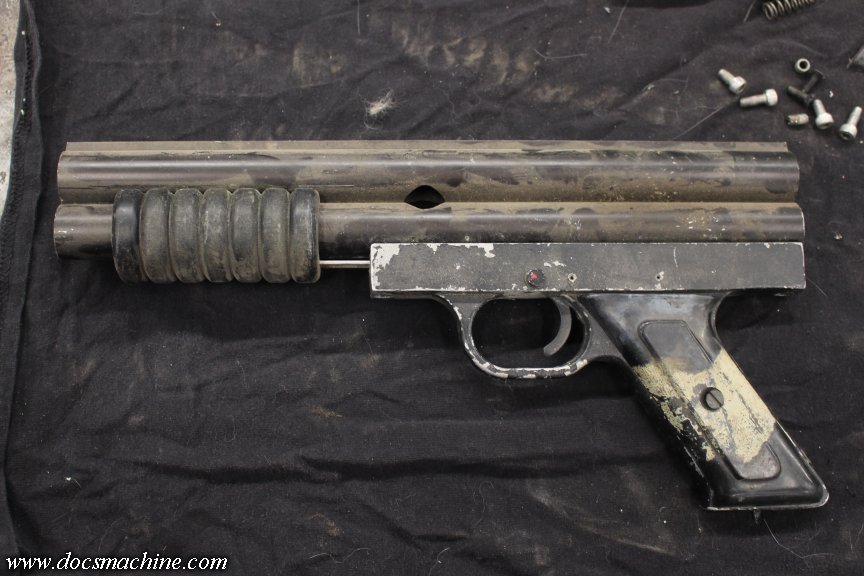
And while I was doing that, I noticed something I had not noticed before- namely, the grips.
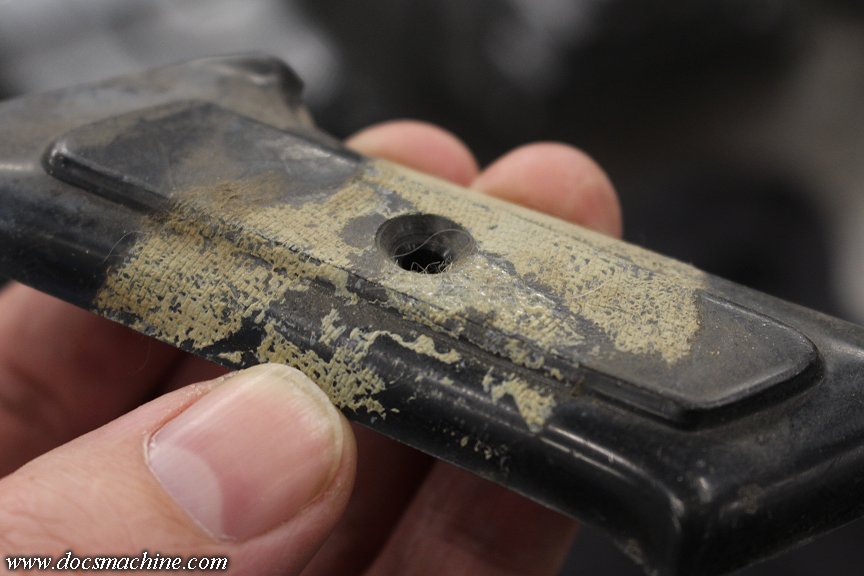
They'd been duct-taped together when I got them (I'm pretty sure both pairs were) and even back then, the tape was so old the silver cloth had crumbled off, and all that was left was the dried-up adhesive.
With a little care, I was able to scrape the adhesive off; wipe the rest off with solvent, and then lightly polish the plastic to get rid of some of the decades of mild oxidation.
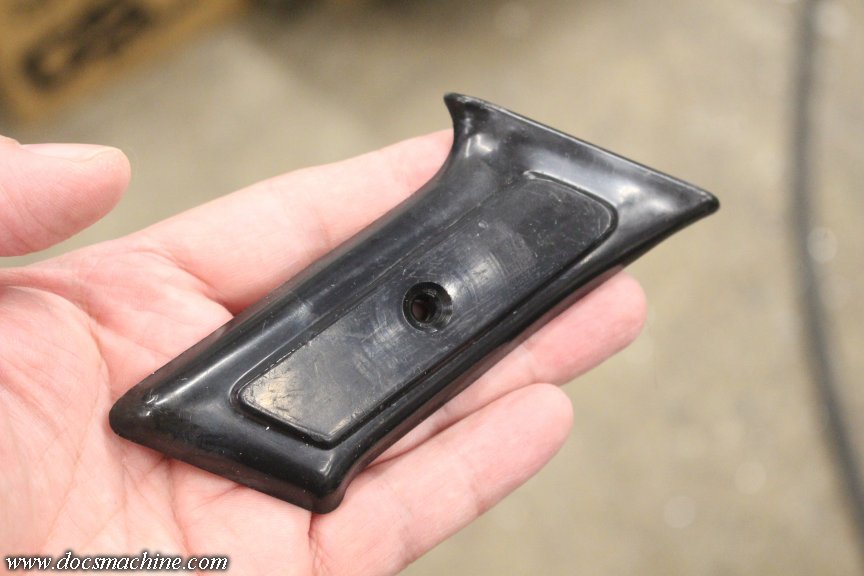
Notice anything? Look at the pic at the top of the page. Every other Puma I've ever seen (all in pictures, of course) has "PUMA" molded into the grips, and usually filled in with yellow paint. So are mine early-generation guns before the name was added to the molds?
Quite the opposite, I think. The inside of the grips shows where the lettering used to be.
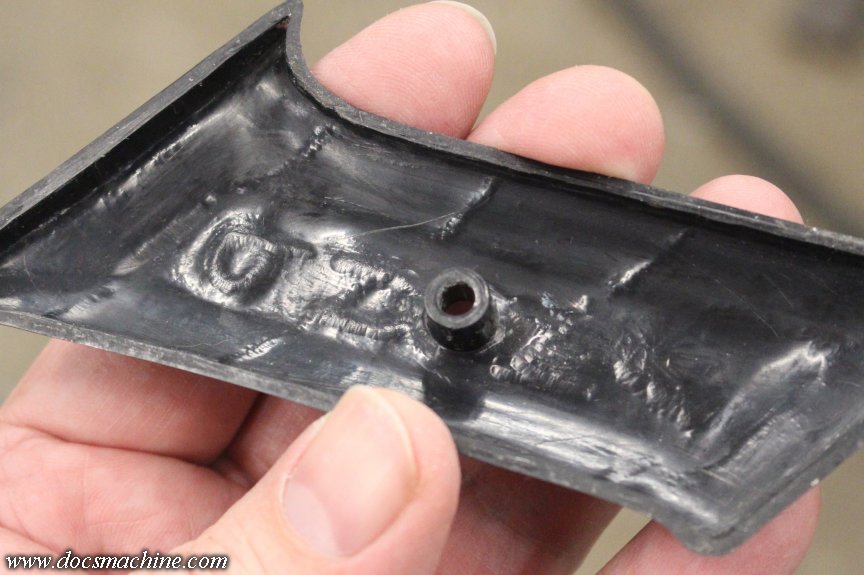
The lettering has the apperance of having been welded- and by that I mean it appears that the letters in the molds had been partially filled in with TIG welding.
Why? Pure guess, but look how bad the inner mold was:
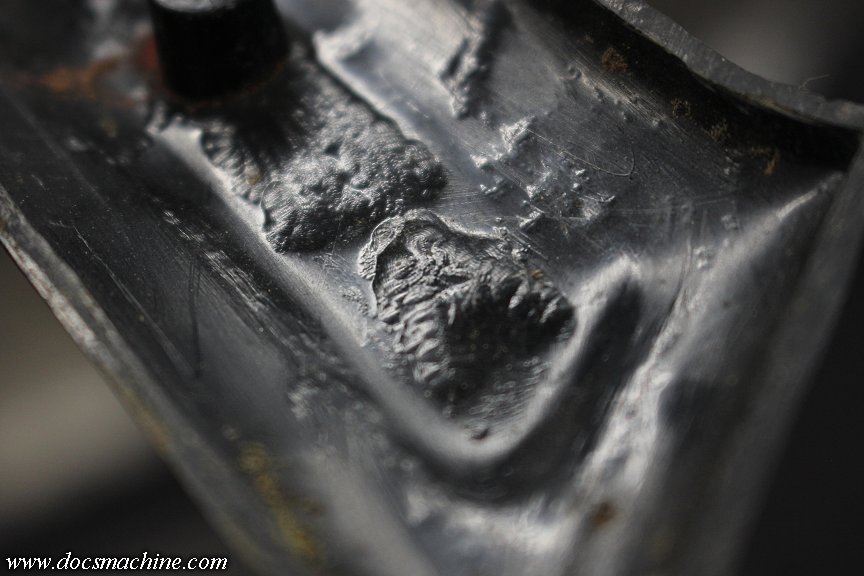
That suggests the molds were damaged at some point, and possibly a new outer was made. The lettering was probably left off as a cost-cutting measure, as money might have been getting tight at that point. Had they left the negative voids for the letters on the inner mold, that may have left visible impressions on the outer surface, as the plastic cooled and shrank- so they mostly filled them in with TIG welding, to reduce that happening.
Curiouser and curiouser. Hopefully we can find out more of this whole operation.
And stand by for more! I'm doing a video of this, too, and fully expect to have at least one, if not two, fully functional examples when I'm done.
Doc.

(Photo borrowed from VintageRex.)
I'm given to understand that the gun had some leakage or reliability issues, the true extent of which no one can say. But according to a very old rec.sport.paintball newsgroup post from '96, the problems- or possibly financial issues- led the developer to slink off into the night, leaving behind the guns, his field, and everything. Supposedly the gun cost twice what a Nel-Spot did at the time, and I'd wager that between that and reliability issues, sales weren't up to expectations.
AND... this was not a cheap gun to make. The pump grip and the grip panels were injection molded, the grip frame die-cast, and the body was a custom extrusion. As a rough guess, I'd bet the guy sank over $100K- in 1985 money!- into them, before the first one ever hit the fields. If he had bank loans to finance it, lower than expected sales could have easily crashed the company.
But, that's mostly guesswork and rumor. Hopefully we can get more real info, but for the time being, let's see if we can't bring one of these badboys back!
I bought or horsetraded for a pair of them from some fellow in Canada, back in 1999, just as I was getting this little biz of mine up and running. They'd been dismantled and were in a bag when I got them, and a quick survey showed a few parts needing repair or replacement. One of the biggest being the upper CO2 plugs- the knob with the red button, seen above.
That's where the 12-gram goes, like the old BE Nightmares, and the red knob is both a "piercing" and a 'degas' button. You drop a cartridge in, and then smack that knob- that drives the cart forward a bit and pierces it against a fixed and not-hollow pin. That pressurizes the entire chamber.
Smack it again, and that vents the upper tube, so the knob can be easily removed and the cartridge replaced.
Both of mine were missing them, and back then I didn't even have a picture of what they looked like. AND... at the time I got them, I may not have even had a good lathe, and even if I did, my skills weren't up to snuff. The knobs use a heavy, shallow ACME thread- it's only about two full turns to remove the plug. I had a local machinist make three blanks for me, just doing the threads, and I'd take care of the rest.
"The rest", however, had to wait for three things: One, I needed to find out what the plug looked like, and how that degassing knob worked. I didn't even know at the time the knobs had to actually seal the chamber. Two, I needed a better lathe, and maybe a little more practice before taking that on. And three, I needed the free time to do it.

Fast forward roughly twenty-four years.

I've been thinking of some of these old projects, with an eye towards making some nice little videos out of them. (And as an excuse to finally get some of them done.
 ) I remembered these, and one evening when the project du jour was not going well, I decided to go dig them out see what all needed to be done.
) I remembered these, and one evening when the project du jour was not going well, I decided to go dig them out see what all needed to be done.It took me much longer than expected to find them, and as it turned out, they were in a wholly unexpected box.

They should not have been jumbled in there- I'm not sure how it happened, but at least I found them.
Or most of them, anyway. I was pretty sure I had very close to all the parts needed to put both of them back together, save for the CO2 plugs. But after sifting that box, I had two bodies, two pumps, two grip frames... one set of grip panels, one hammer, one spring, and some miscellenous screws.

Turned out one of them still had the valve and bolt...

So with the one hammer and mainspring, and single set of grips, I had at least one complete gun. I'm still fairly certain that I had a bag with the extracted parts from the second, but an exhaustive search still hasn't turned those up.
And, of course, I'm not sure I've even looked at these in somewhere around fifteen years. Since they were in a box I didn't expect them in, chances are that bag wound up elsewhere. I don't know.
However, a Guild regular pointed out that there was actually one for sale up on eBay right then, and checking that out, it seemed not only complete, but actually had the CO2 plug as well. It was missing the 'degas' part, but I could at least have the body of the knob to measure to fit new ones.
While waiting for it to come in, I set about looking mine over to finally take the first close look at these things, in more than a decade. Just mocking one up real quick, here's what it looked like.

And while I was doing that, I noticed something I had not noticed before- namely, the grips.

They'd been duct-taped together when I got them (I'm pretty sure both pairs were) and even back then, the tape was so old the silver cloth had crumbled off, and all that was left was the dried-up adhesive.
With a little care, I was able to scrape the adhesive off; wipe the rest off with solvent, and then lightly polish the plastic to get rid of some of the decades of mild oxidation.

Notice anything? Look at the pic at the top of the page. Every other Puma I've ever seen (all in pictures, of course) has "PUMA" molded into the grips, and usually filled in with yellow paint. So are mine early-generation guns before the name was added to the molds?
Quite the opposite, I think. The inside of the grips shows where the lettering used to be.

The lettering has the apperance of having been welded- and by that I mean it appears that the letters in the molds had been partially filled in with TIG welding.
Why? Pure guess, but look how bad the inner mold was:

That suggests the molds were damaged at some point, and possibly a new outer was made. The lettering was probably left off as a cost-cutting measure, as money might have been getting tight at that point. Had they left the negative voids for the letters on the inner mold, that may have left visible impressions on the outer surface, as the plastic cooled and shrank- so they mostly filled them in with TIG welding, to reduce that happening.
Curiouser and curiouser. Hopefully we can find out more of this whole operation.
And stand by for more! I'm doing a video of this, too, and fully expect to have at least one, if not two, fully functional examples when I'm done.

Doc.

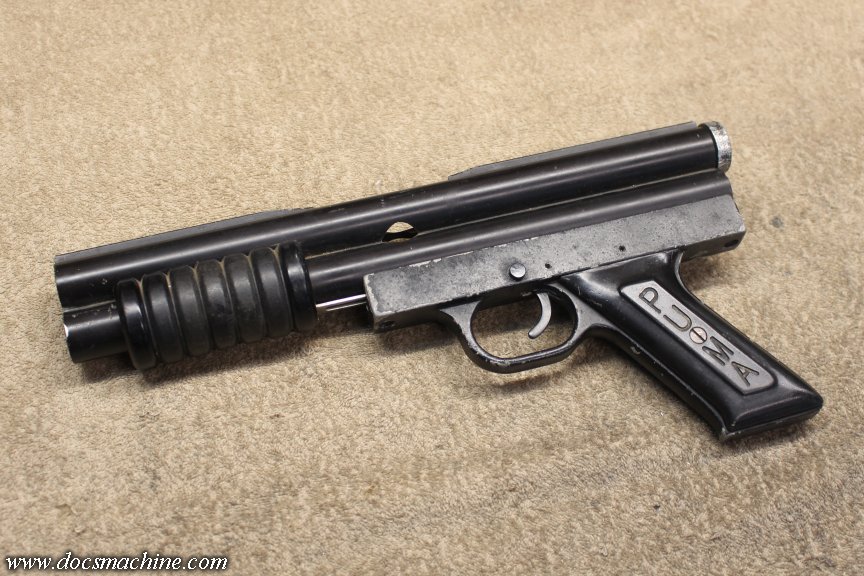
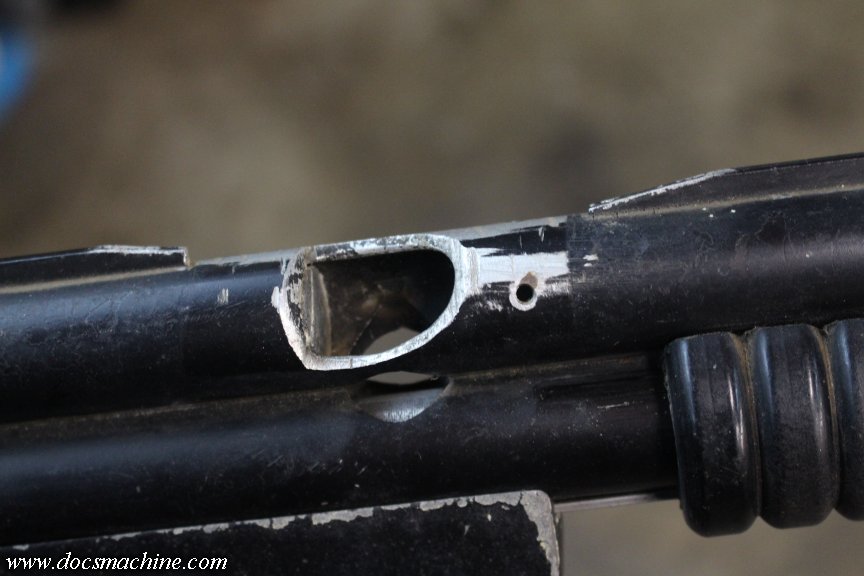
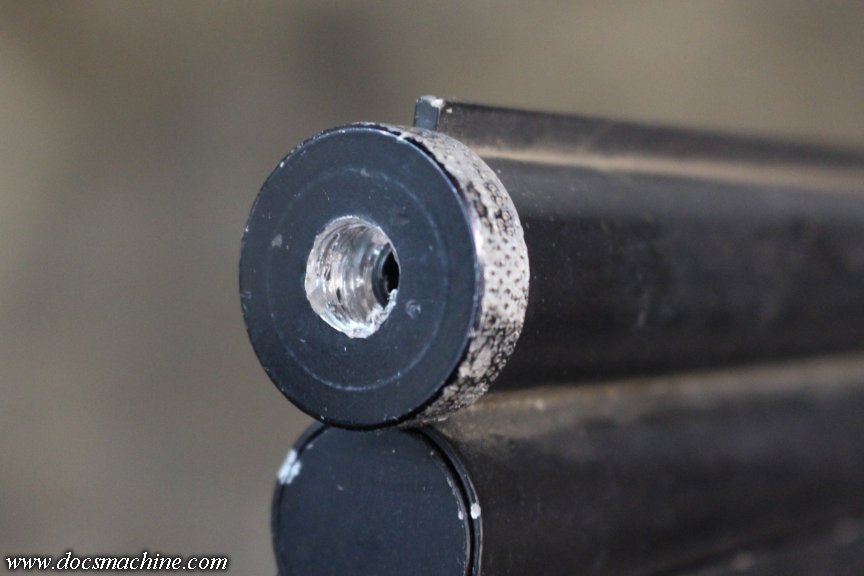
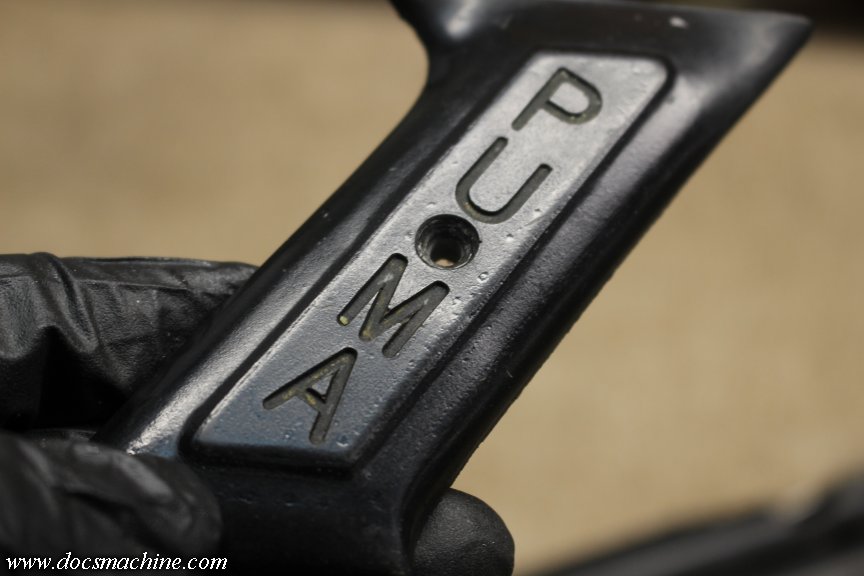
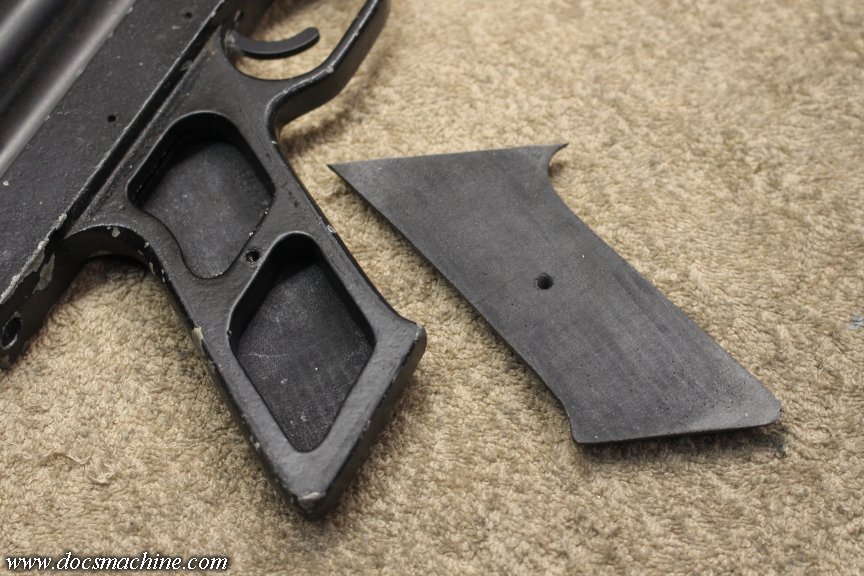
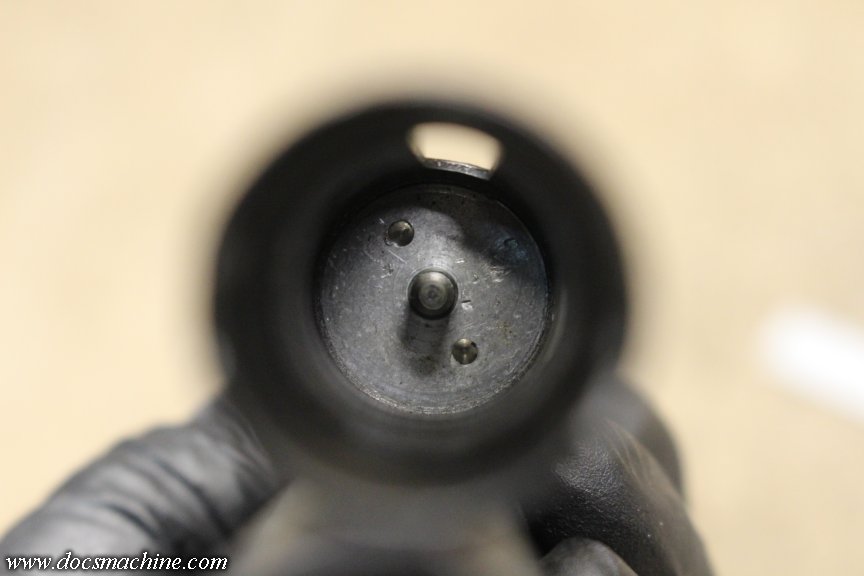
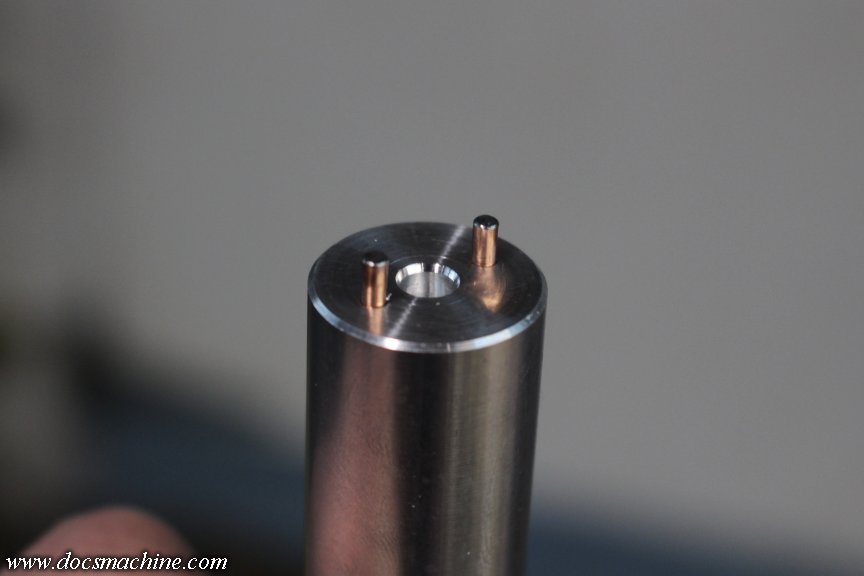
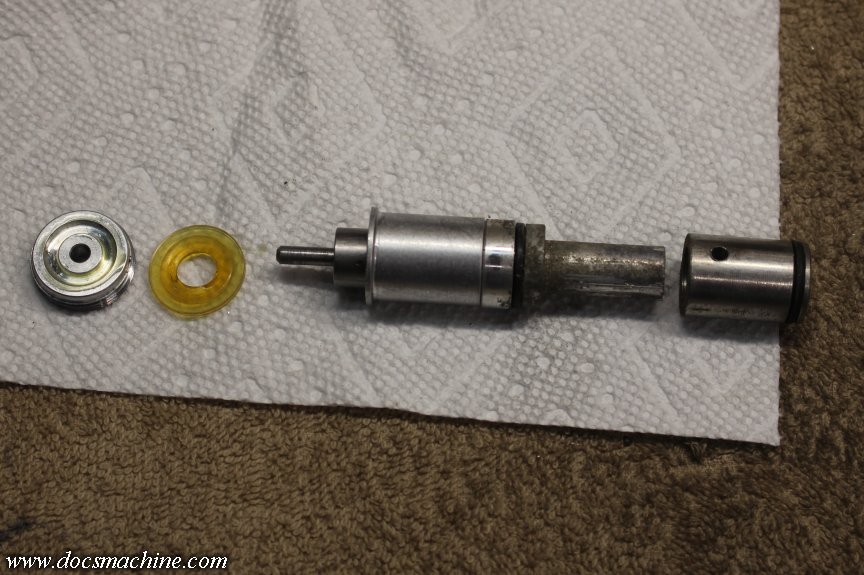


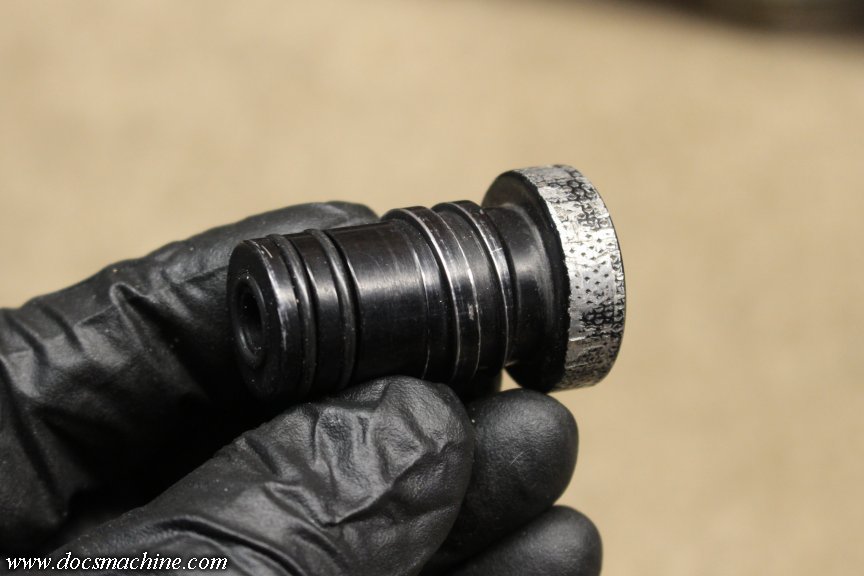
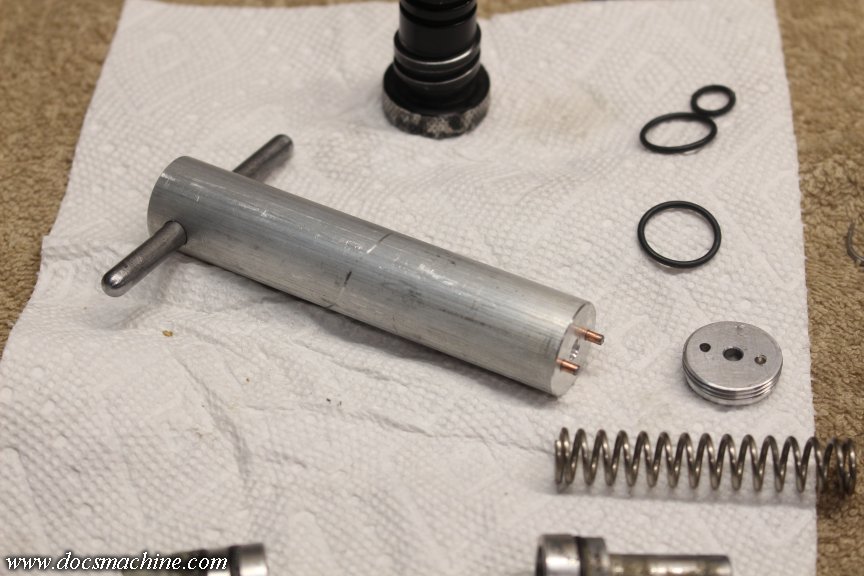
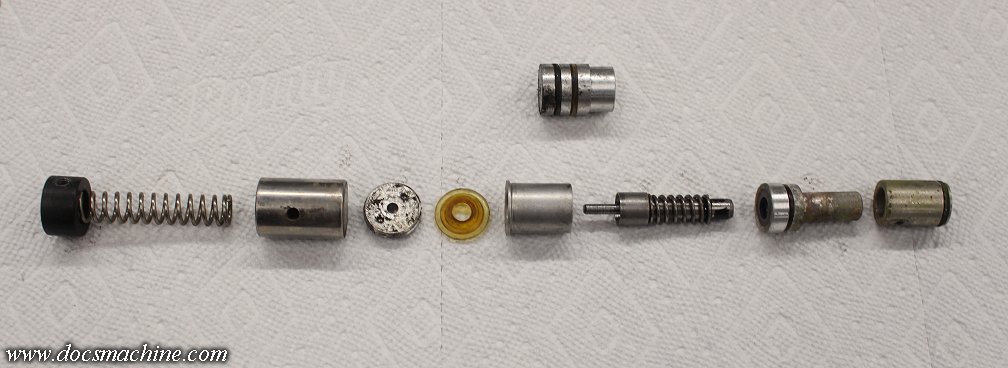
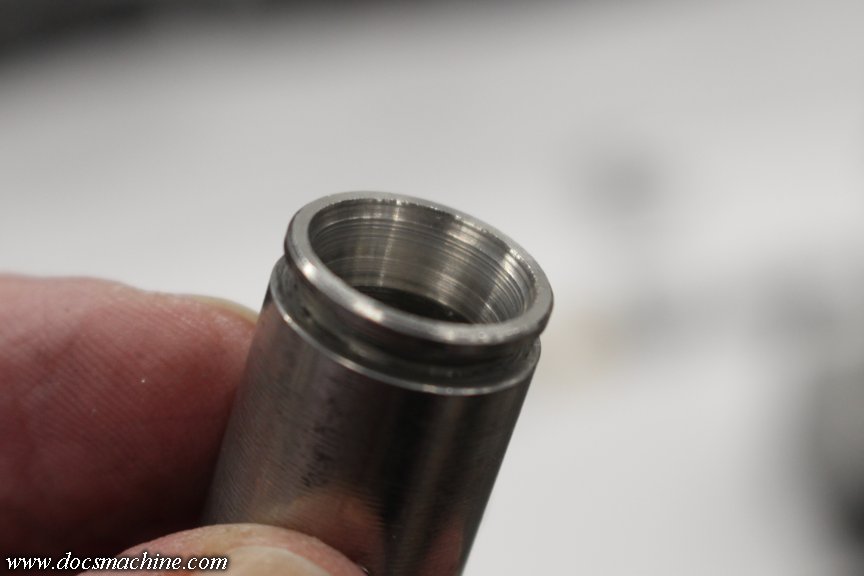
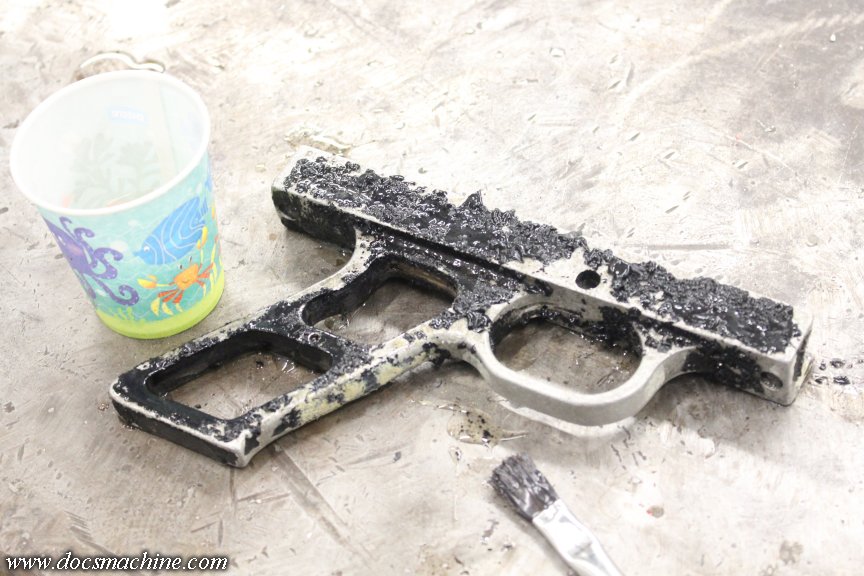
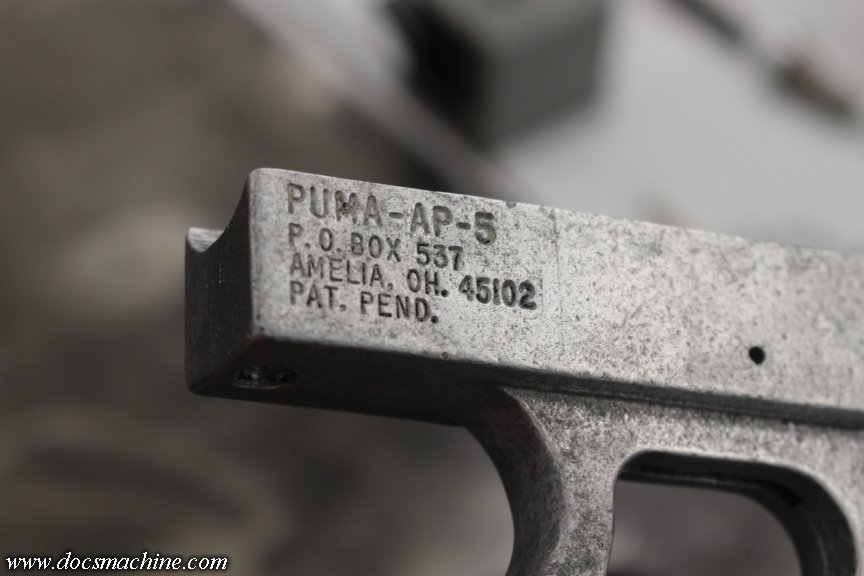
Comment